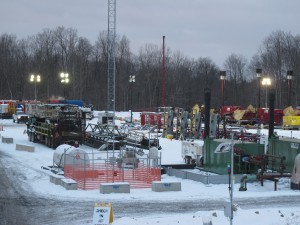Federal Legislation Aims to Close "Fracking Loopholes"
Pennsylvania Representative Matthew Cartwright (D-17) has introduced legislation to remove oil and gas industry exemptions from the federal Clean Air Act and the Clean Water Act. Cartwright is from Scranton, and his district stretches over six counties including Schuylkill, Carbon, Lackawanna, Luzerne, Monroe, and Northampton County.
The “FRESHER” Act would remove federal regulatory exemptions related to storm water run-off at drill sites. And the “BREATHE” Act would require air emissions generated by the oil and gas industry be subject to federal aggregation regulations.
“The lack of oversight and permitting of storm water in the oil and gas industry represents a danger to the nation’s waterways and other key assets. This is especially true in areas where hydraulic fracturing has increased in prevalence,” said Rep. Matt Cartwright in a press release. “Both of these pieces of legislation are common sense and I urge my colleagues from both sides of the aisle to get on board.”
The BREATHE Act stands for “Bringing Reductions to Energy’s Airborne Toxic Health Effect,” and the FRESHER Act is an acronym for “Focused Reduction of Effluence and Stormwater runoff through Hydraulic Environmental Regulation.”
Congress enacted the Clean Water Act back in 1972 as a way to regulate discharges into the country’s rivers and streams. The CWA was amended in 1987 to include storm water run-off. But oil and gas production are exempted from those regulations. And through the 2005 Energy Policy Act, those exemptions include oil and gas construction. Environmentalists worry about run-off from well pads, pipelines and construction sites.
The Clean Air Act, passed by Congress in 1970, exempts oil and gas wells from aggregation. That means each well site is considered an individual source of pollutants, and does not take into account all of the well sites in a specific area.

















